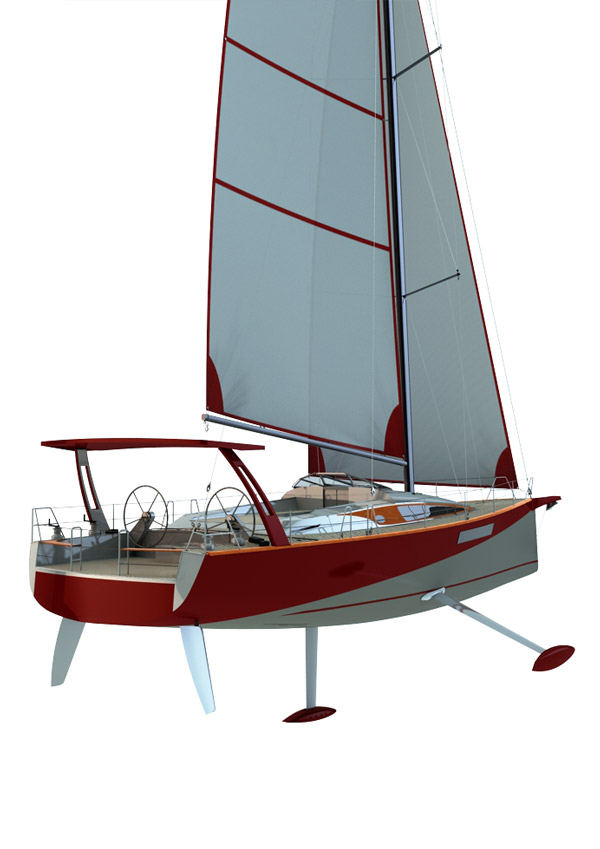Torque Moment
THE STABILITY NEEDS TO BE INCREASED
For a yacht to be fast it needs to be able to carry a large sail area without needing to reef as soon as the wind increases.It is therefore, of utmost importance to increase stability.
The angle of heel of the yacht is the result of the balance between the heeling and another moment called the righting moment.

The stronger the righting moment, the more the boat will be able to withstand an increasing heeling, thus more canvas can be carried for a given wind. If more canvas can be carried , there is a greater propulsive force, so it is possible to go faster.
What technicians might call the yacht’s "power2 is, for the most part, its righting moment.
In order to optimize this force (righting moment) it is necessary to:
- Increase its width to increase the shift of the centre of buoyancy to leeward.
- Increase its width too, to render roping down and ballasts more efficient by adjusting the centre of gravity to the wind.
- Extend the ballast keel to lower the centre of gravity and increase its shift to the windward when the boat heels.
It is also possible to increase the ballast weight. (water ballast are inconvenient and require carefull surveyance) and more interestingly, be able to displace the ballast to windward by means of an oscillating keel and ballasts as on the more sophisticated ocean racing yachts.
But let us stay in the world of pleasure.
Our solutions :
Two canting keels with Hydraulic Manoeuvres and Automatic Control
(No inconvenient water ballasts)
THE 2 CANTING KEELS ARE ENTIRELY AUTOMATED
The programme that automates the keels entirely frees the skipper from controlling them and permanently optimises their position in function of the wind force, the heel and the course steered.
NB: Contrary to the solution used on all race yachts: One oscillating keel, leeway and water ballasts.
The latter necessitates tedious and complex manoeuvres at each tack to be carried out by professional skippers only.
In no way does the automated two-oscillating keel system complicate navigation.The skipper simply has to define his programme for the day, race or cruise, or even the reduction of the draught (a simple click) up to grounding if desired.
To counter the force generated by the sails, yachts need a stability system: The keel.
Modern solutions for improving stability: Oscillating keel and /or water ballasts
These two solutions are not only advantageous: The water ballasts are complicated, the oscillating keel requires the addition of two lateral daggerboards which add further complexity to the tacking manoeuvres.
Our entirely automated twin oscillating keels do without daggerboards as the keel fins are asymmetric and have a positive incidence.
Less drag: This keel system produces less drag in most sailing situations.
Example: A typical axial keel presents an incidence of up to 8° on the boat’s true course when the hull is heeled at 20°.
The two canting keels, due to their asymmetry, present an incidence of maximum 4° under the same conditions, the drag will, therefore, be much less.
Also, at full power, the keel to windward comes out of the water, reducing the drag even more.
The drag is considerably inferior to that of other more traditional systems.
The fineness of the keel fins, thanks to the use of very high resistance steel. It also contributes to reducing the drag which, at the end of the day, will be equal or inferior to that of a boat with only one keel.
The TAVA’E ‘s drag is considerably less than that of many other boats.
LET'S BE LOGICAL: LESS DRAG, MORE SPEED...


